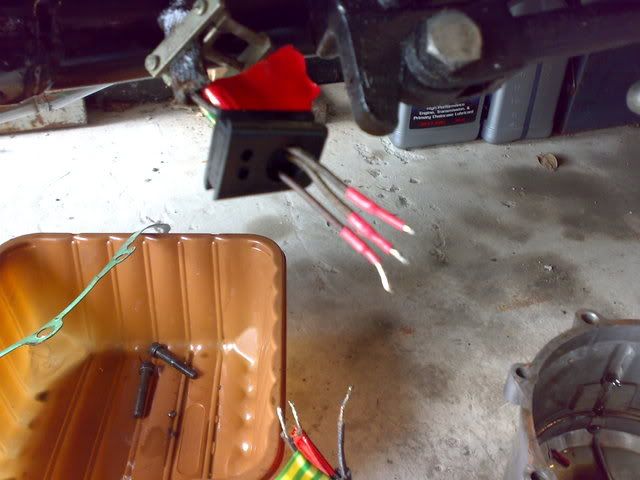Alternator Grommet Repair - helpful tips!
Posted: Sun Apr 13, 2008 5:41 pm
A common problem with Zeds is a leak from the L/H casing where the alternator wires exit 
If you can't stop oil leaks with silicon/sealent etc, then its time for a new grommet
The casing needs to be removed (lean bike to the right to prevent oil pouring out).
You will need to remove the windings in the casing. Remove the 3 x screws and a bit of gentle persuasion may be required
The wires will need to be cut to remove the old & re-fit the new grommet
Although it shouldn't matter if the wires get muddled, its probably best to mark the wires at the stator end & further up past where the wires will be cut
Once the wires have been cut, you'll need to thread them thru the new grommet To make this possible I used a bit of heat shrink over the end to hold the 'hairy' cable cover whilst its pushed thru the grommet holes:
To make this possible I used a bit of heat shrink over the end to hold the 'hairy' cable cover whilst its pushed thru the grommet holes:

The heat shrink can then be removed before the next step.
The wires need to be soldered together securely. I used more heat shrink to cover the joints once soldered, so remember to put some more over the wires before soldering
Whem replacing the casing, make sure its very clean, no old gasket left on any of the faces & tighten evenly
Jobs a good'n
If you can't stop oil leaks with silicon/sealent etc, then its time for a new grommet
The casing needs to be removed (lean bike to the right to prevent oil pouring out).
You will need to remove the windings in the casing. Remove the 3 x screws and a bit of gentle persuasion may be required
The wires will need to be cut to remove the old & re-fit the new grommet
Although it shouldn't matter if the wires get muddled, its probably best to mark the wires at the stator end & further up past where the wires will be cut
Once the wires have been cut, you'll need to thread them thru the new grommet

The heat shrink can then be removed before the next step.
The wires need to be soldered together securely. I used more heat shrink to cover the joints once soldered, so remember to put some more over the wires before soldering
Whem replacing the casing, make sure its very clean, no old gasket left on any of the faces & tighten evenly
Jobs a good'n